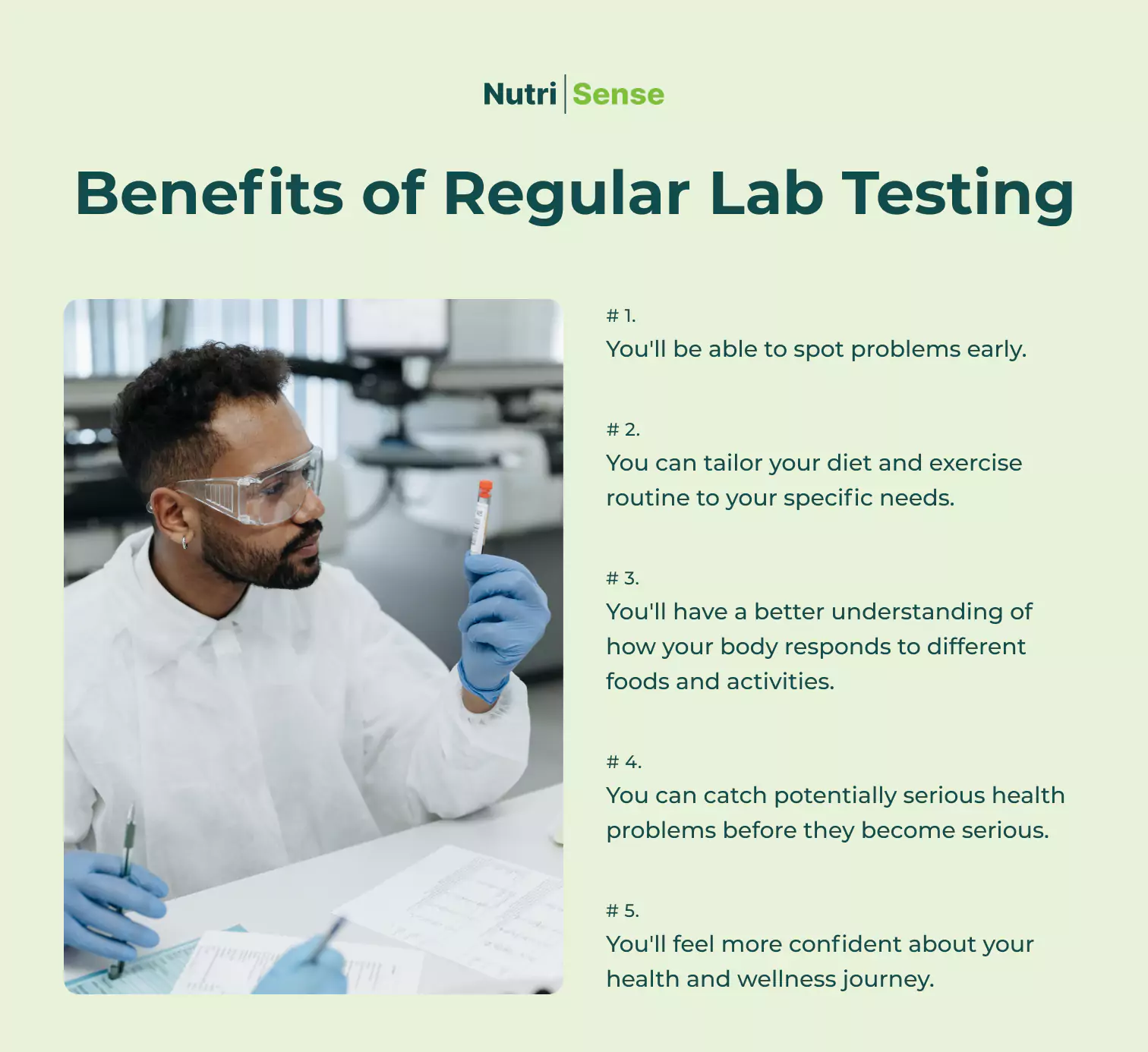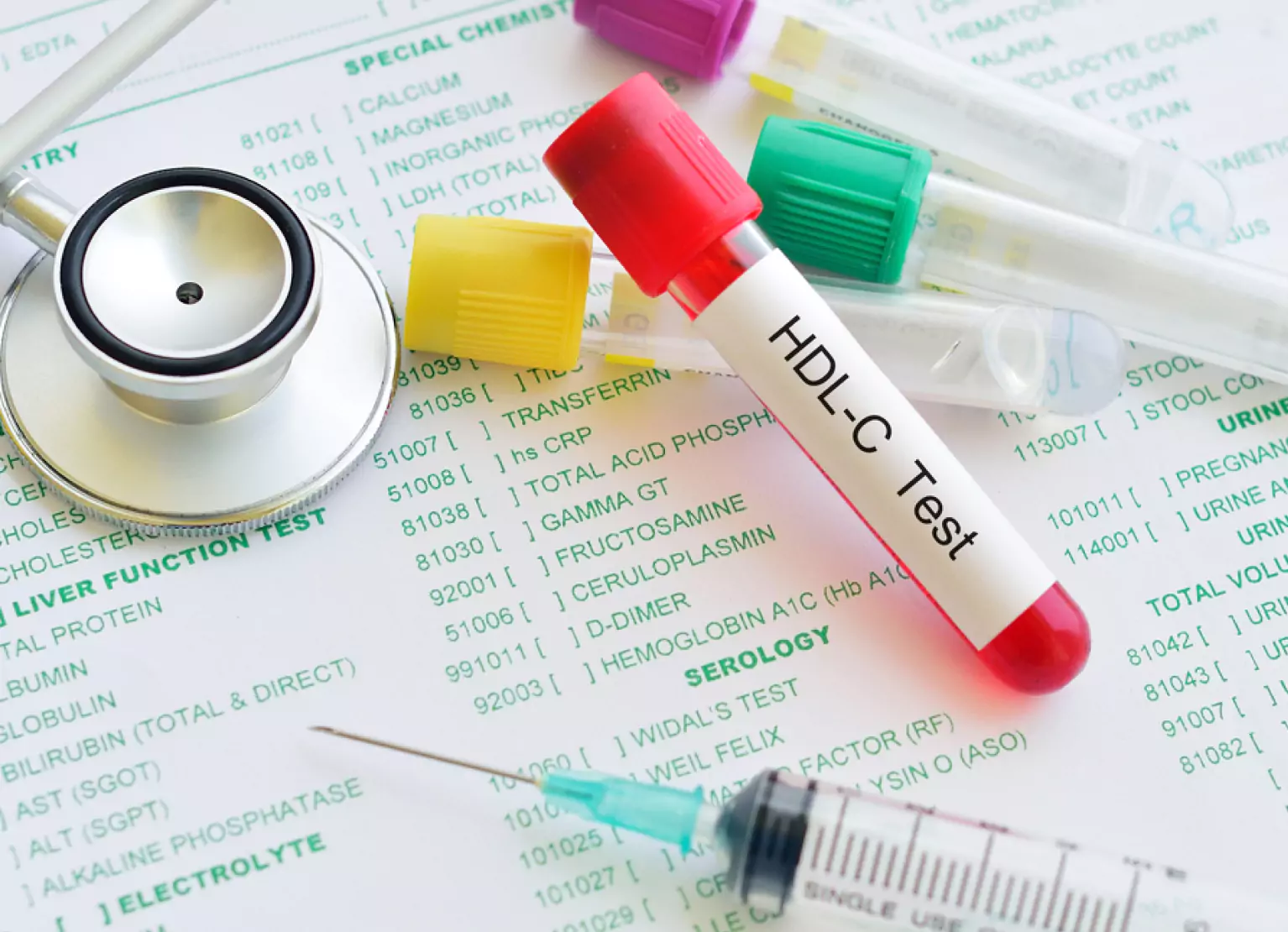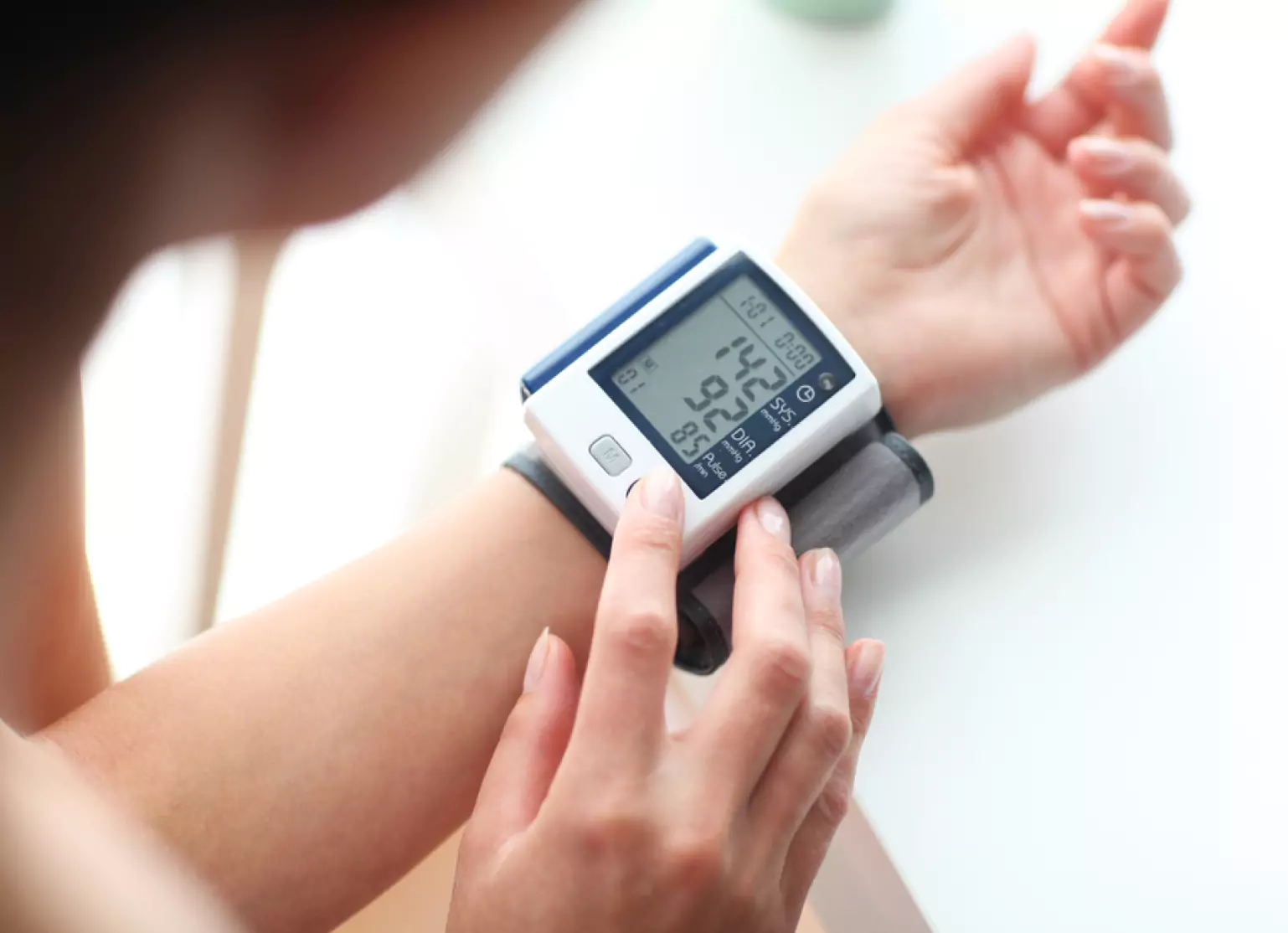Consider These Lab Tests to Maintain Good Metabolic Health

Key Takeways
Did you know that your metabolic health can significantly impact your overall wellbeing? According to research, only 12 percent of American adults are metabolically healthy, which means many adults have higher risk factors for various health conditions, including insulin resistance, metabolic syndrome, and heart disease.
Luckily, there are a variety of lab tests that can give you insights into your metabolic health. An important thing to keep in mind is that your metabolism is constantly changing. So, it's a good idea regularly test for various conditions.
Benefits of Regular Lab Testing

1. You'll be able to spot problems early.
2. You can tailor your diet and exercise routine to your specific needs.
3. You'll have a better understanding of how your body responds to different foods and activities.
4. You can catch potentially serious health problems before they become serious.
5. You'll feel more confident about your health and wellness journey.
Some Tests to Ask Your Doctor About
By understanding more about the types of lab tests available, you can work with your healthcare provider to ensure you’re doing everything to maintain good health.
An important thing to remember here is not to take any of this information as medical advice. So, while we’ve given you some recommendations for typical healthy readings, remember that these will change based on your specific needs, body type, and other health conditions you may have.
Whether you’re trying to pick a lab test, read test results or make lifestyle changes based on that, it’s best to consult with a healthcare professional like your primary care physician. They will be able to check your health history to see what laboratory tests are best for your needs. In the meantime, here’s a little more about each one:
Fasting Glucose
The fasting glucose test is a simple blood test used to assess your risk for diabetes. The test is typically done in the morning before you have eaten breakfast—it will check your blood sugar levels after at least eight hours of fasting.
A fasting glucose test is a helpful tool for identifying people most at risk of diabetes who may benefit from lifestyle changes or medication.
What to Look For
According to the Centers for Disease Control and Prevention, a normal fasting blood sugar level is 99 mg/dL or less. The Nutrisense Nutrition Team recommends fasting levels of 70-90 mg/dL.
If your fasting blood sugar level is between 100 and 125 mg/dL, you may be at risk of prediabetes. If your fasting blood sugar level is 126 mg/dL or higher on two different occasions, you may be at risk of diabetes.
Fasting Insulin Levels
Like fasting glucose levels, this gives you some information about your insulin but only provides a snapshot of what's happening in a fasted state.
The fasting insulin levels test is a blood test that measures the amount of insulin in your body. It can help diagnose type 2 diabetes, which occurs when your body doesn't produce enough insulin or doesn't use it properly.
What to Look For
The test is usually done in the morning before you've eaten anything. The normal range for fasting insulin levels is four to 25 micrograms per deciliter (mcg/dL). While a fasting insulin level of 25 mcg/dL or higher is typically a sign of type 2 diabetes, you will need further testing to confirm a diagnosis.
In one study investigating insulin resistance, subjects who were nonobese maintained fasting insulin of five to seven uIU/mL. There is some evidence that fasting insulin more than nine is associated with pre-diabetes.
The Nutrisense Nutrition Team recommends aiming for fasting insulin levels between two to eight mcg/dL.
High-Density Lipoprotein (HDL) Cholesterol

The HDL cholesterol test is a blood test that measures the level of HDL cholesterol in your body. HDL cholesterol is "good" cholesterol because it helps remove other types of cholesterol from your arteries.
Why test for HDL? Having good HDL cholesterol levels can help reduce your risk of heart disease and stroke. The blood test is usually part of a lipid panel that includes LDL cholesterol and triglycerides tests.
What to Look For
To prepare for the test, you will need to fast for 12 hours before your appointment.
Also, avoid drinking alcoholic beverages or caffeine for at least 24 hours before the test. Remember to check with your healthcare provider to see if there are any other restrictions.
Seeing a higher number on your test results indicates higher HDL cholesterol levels in your blood. The Nutrisense Nutrition Team recommends aiming for values >60. This value is optimal in protecting against cardiovascular disease.
Triglycerides Test
Triglycerides are fat found in the blood that your body uses for energy. Triglycerides are not all bad, but too much of this fat in your blood can lead to heart disease.
A triglycerides test measures the triglycerides in your blood, usually in conjunction with the cholesterol test mentioned above. A person's total cholesterol level includes HDL (good) cholesterol, LDL (bad) cholesterol, and triglycerides.
If you have a high triglyceride level (compared to your HDL and LDL levels) may be a sign of heart disease. Too much triglyceride in your blood can also cause pancreatitis or inflammation of the pancreas. The pancreas is an organ that produces enzymes that help digest food.
If your triglycerides level is high, your doctor may order additional tests to check for health conditions that may be causing it. Treatment for high triglycerides may include lifestyle changes, such as eating a healthy diet, exercising, and medications.
What to Look For
According to this meta-analysis, subjects with triglyceride levels less than 90 mg/dL had no significant risk of all-cause mortality and had a much lower risk of cardiovascular disease.
The Nutrisense Nutrition Team recommends aiming for values <150. If you have concerns about your triglycerides level after you get your test results, it’s best to consult with your doctor.
Triglyceride/HDL Ratio
The Triglyceride/HDL Ratio test is a simple, non-fasting blood test that can help assess your risk of heart disease. The test measures the ratio of triglycerides (a type of fat) to HDL (high-density lipoprotein) cholesterol.
A high triglyceride/HDL ratio is a marker for atherosclerosis, which is plaque buildup in the arteries.
The Triglyceride/HDL Ratio test can help determine whether you are at increased risk for heart disease.
The test is usually part of a routine physical exam or lipid panel. It’s important to note that this is not a diagnostic test for heart disease. If your ratio is high, it does not necessarily mean that you have heart disease, but it does indicate that you may be at increased risk.
What to Look For
The ratio is calculated by dividing your triglyceride level by your HDL cholesterol level. A high ratio indicates an increased risk of heart disease, while a low ratio indicates a lower risk.
The Nutrisense Nutrition Team recommends aiming for a triglyceride to HDL ratio of less than 1. But remember that the exact level will vary depending on other factors like your age and sex.
Blood Pressure

A blood pressure test is not technically a lab test—you won’t have to give blood samples or get test results from a lab. But the routine test deserves a spot on this list because it’s a test that can give you an idea of other health conditions you may be at risk of.
The test measures the force of blood against the walls of your arteries. It usually uses an inflatable arm cuff and mercury or aneroid manometer. A mercury manometer is a device that uses mercury to measure blood pressure.
An aneroid manometer does not use mercury. Your health care provider may also use a digital blood pressure device that uses sensors to measure your blood pressure in millimeters of mercury (mmHg).
As the cuff on your arm deflates, you’ll hear a few sounds. The first is the sound of your heartbeat; it’s called systolic pressure.
The diastolic pressure, which is the second sound, is when blood flow begins again. Blood pressure readings have two numbers, such as 120/80 mm Hg.
The top number is the systolic pressure measuring the force your heart generates when it contracts and pumps blood through your arteries. The bottom is diastolic pressure, which measures blood's force against arterial walls between heartbeat contractions.
What to Look For
A normal blood pressure reading is less than 120/80 mmHg. If your systolic blood pressure is 120 to 139, or your diastolic blood pressure is 80 to 89, you may have prehypertension.
Prehypertension means that you are likely to develop high blood pressure unless you take steps to prevent it. If your systolic blood pressure is 140 or higher, or your diastolic blood pressure is above 90, you may have high blood pressure.
The Nutrisense Nutrition Team recommends aiming for < 120/80 when testing your blood pressure.
Alanine Transaminase (ALT) and Aspartate Aminotransferase (AST)
ALT and AST are two liver function tests. ALT stands for Alanine Transaminase, and AST stands for Aspartate Aminotransferase.
These enzymes are found in the liver and are responsible for breaking down amino acids. The enzymes enter your bloodstream when your liver is damaged.
So, it’s no surprise the ALT and AST tests typically help diagnose liver damage or liver disease.
What to Look For
In most cases, test results that show a high level of ALT or AST in the blood indicate liver damage. Normal ranges for AST are five to 37, and ALT are seven to 56. They can also vary based on gender. The Nutrisense Nutrition Team recommends aiming for values of 20 or less for both.
However, other conditions can cause elevated levels of these enzymes, so your doctor will interpret the test results with your overall medical history in mind.
High-Sensitive C-Reactive Protein (hs-CRP)
The hsCRP test is a blood test that measures the level of hs-CRP in your blood. hs-CRP is a protein that your liver produces in response to inflammation.
While inflammation is typically a normal process in response to injury or infection, chronic inflammation can lead to conditions like heart disease.
The hsCRP test can help assess an individual's risk for developing these conditions. A high level of hs-CRP in your blood is associated with an increased risk of developing these conditions.
What to Look For
According to the Nutrisense Nutrition Team, it’s best not to exercise right before the test. When reading your test results, aim for values < 1.
Uric Acid

The uric acid test can measure uric acid levels in your blood. Uric acid is a waste product produced when your body breaks down purines, found in many foods, including organ meats and seafood.
For most people, uric acid leaves the body in the urine. However, some people have a condition called hyperuricemia, which means they have too much uric acid in their blood.
High uric acid levels can lead to gout, a type of arthritis that causes pain, swelling, and inflammation in the joints. The uric acid test can help doctors diagnose hyperuricemia and gout. If you have been diagnosed with gout or kidney stones, your doctor may order this test to check for flares or monitor your treatment. They can also use it to monitor the effectiveness of treatment.
What to Look For
According to the Nutrisense Nutrition Team, it’s best to aim for values <5. Remember, ranges can vary based on your gender.
What is a BUN (Blood Urea Nitrogen) Test
The BUN test measures the amount of nitrogen in your blood from urea. Like uric acid, urea is a waste product. But while urea can come out through sweat and urine, uric acid only comes out through your urine.
When your liver breaks down amino acids (the building blocks of protein), it produces urea. The BUN test (along with other tests) evaluates kidney function and can also help other conditions like heart failure and dehydration.
The BUN test is usually done along with a creatinine test.
What to Look For
A high BUN level may indicate kidney disease, dehydration, heart failure, or urinary tract blockages. A low level may indicate liver diseases, such as hepatitis, or an inherited disorder that affects amino acid metabolism.
According to the Nutrisense Nutrition Team, normal values are generally between six to 24 mg/dl.
Comprehensive Metabolic Panel (CMP)
A comprehensive metabolic panel (CMP) is a blood test that measures the levels of various substances in your blood, including glucose, electrolytes, and enzymes. It is a combination of many of the tests mentioned above. The CMP can help diagnose and monitor liver, kidney, or pancreas problems.
The CMP includes 14 different tests, each measuring a different substance in your blood. Most of these tests are known as "liver function tests" because they measure the levels of enzymes that your liver produces.
The CMP also measures the levels of electrolytes, such as potassium and sodium, and the level of glucose in your blood. The CMP is often part of a routine physical exam.
What to Look For
Remember to fast for eight to 12 hours before your test. On your results, you will likely see a range of values. Most people will fall into the “normal” range. However, it might be worth digging into these values in more detail if your value is on the high or low end of that range.
Find the right Nutrisense programto turn insight into progress.
Go Beyond Glucose Data with Nutrisense
Your glucose can significantly impact how your body feels and functions. That’s why stable levels are an important factor in supporting overall wellbeing. But viewing glucose isn't enough. Nutrisense, you’ll be able to learn how to use your body's data to make informed lifestyle choices that support healthy living.
One-to-one coaching
Sign up to access insurance-covered video calls to work with a glucose expert: a personal registered dietitian or certified nutritionist who will help tailor your lifestyle and diet to your goals.
Monitor and measure what matters
With the Nutrisense CGM Program, you can monitor your glucose with health tech like glucose biosensors and continuous glucose monitor (CGM)s, and analyze the trends over time with the Nutrisense App. This will help you make the most informed choices about the foods you consume and their impact on your health.
Find your best fit
Ready to take the first step? Start with our quiz to find the right Nutrisense program to help you take control.

Carlee's training at Western Illinois University and an internship at the Memphis VA Hospital lead her to a career in outpatient counseling and bariatric nutrition therapy. In these positions, Carlee realized many of the disease states (upwards of 80%!) her patients experienced were actually preventable. She knew she had to dig deeper into preventative health and has since been passionate about helping people translate this complex glucose data into actionable changes anyone can implement into their everyday lives.




